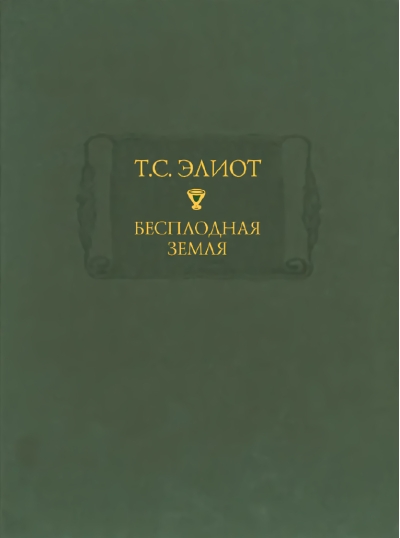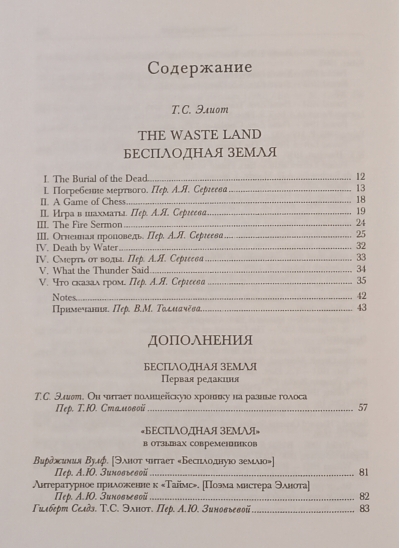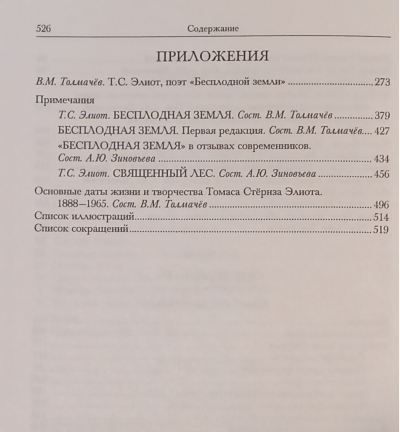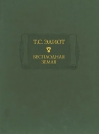Barren land
39.99 €
Out of stock
The book provides an opportunity to take a fresh look at the work of Thomas Stearns Eliot (1888-1965; English Thomas Stearns Eliot), a legendary figure of literary modernism. An American whose ancestors moved to America in the seventeenth century suddenly became an expatriate (and later a British subject) in 1914. A "puritan" in the perception of the world, Eliot was drawn by his contemporary Israel Pound into the orbit of modern literature (James Joyce, Wyndham Lewis, artist poets). Later, this did not prevent Eliot not only from becoming an author who found the modernist equivalent of Christianity in poetry, but also from becoming a prominent representative of enlightened Christian conservatism by the end of the 1930s. The religious appeal only highlighted Eliot’s contradictions: a complex combination of traditionalism and avant-garde outrage, problems with women and chanting his “muse” following the example of Dante, criticism of London’s bohemian and apologies of a number of radicals of modernism. But no matter how Eliot positioned himself at different times, the poet, having changed several public masks, remained in many ways a mysterious figure.
The key to Eliot’s mystery is his most famous work, The Wasteland (published in 1922). It reflects many features of aesthetic modernism of the 1910s-1920s:
Reflection on the theme of “the death of God” and the decline of the West;
The search for a new ideal through extreme disappointment.
The stream of consciousness transferred into lyrics;
- sophisticated symbolic metaphors;
rituals, myths projected on the modernity;
- a combination of high syllable and grassroots idiom (scolding);
- God-seeking;
- references to occult experiences, blasphemy;
- scandalous eroticism;
Play and deep autobiography.
The first Russian translation of The Wasteland was brilliantly executed by Andrei Yakovlevich Sergeev (1933-1998) and published in 1971. However, the poem, which survived many reprints and later translations, was never published in its entirety. In this edition it is published for the first time in Russian without distortion of the author's will, according to the first book edition of 1922. The parallel English text allows us to evaluate Eliot’s skill and the quality of A.Y. Sergeev’s translation. The publication is complemented by translations of the manuscript of the first edition of The Wasteland, reviews and critical responses to the poem – from W. Wolfe to K. Brooks, the founder of the American school of “new criticism”, as well as a full translation of Eliot’s book “The Sacred Forest: Essays on Poetry and Criticism” (1920), where he laid the principles of understanding his own creativity and modernist poetry in general. The translation of the first edition of The Wasteland presented in this volume is of particular value - this version of the poem differs significantly from its final version, revised by Eliot on the advice of Israel (Ezra) Pound.
The publication is equipped with rich iconography of the poet and his entourage.
The key to Eliot’s mystery is his most famous work, The Wasteland (published in 1922). It reflects many features of aesthetic modernism of the 1910s-1920s:
Reflection on the theme of “the death of God” and the decline of the West;
The search for a new ideal through extreme disappointment.
The stream of consciousness transferred into lyrics;
- sophisticated symbolic metaphors;
rituals, myths projected on the modernity;
- a combination of high syllable and grassroots idiom (scolding);
- God-seeking;
- references to occult experiences, blasphemy;
- scandalous eroticism;
Play and deep autobiography.
The first Russian translation of The Wasteland was brilliantly executed by Andrei Yakovlevich Sergeev (1933-1998) and published in 1971. However, the poem, which survived many reprints and later translations, was never published in its entirety. In this edition it is published for the first time in Russian without distortion of the author's will, according to the first book edition of 1922. The parallel English text allows us to evaluate Eliot’s skill and the quality of A.Y. Sergeev’s translation. The publication is complemented by translations of the manuscript of the first edition of The Wasteland, reviews and critical responses to the poem – from W. Wolfe to K. Brooks, the founder of the American school of “new criticism”, as well as a full translation of Eliot’s book “The Sacred Forest: Essays on Poetry and Criticism” (1920), where he laid the principles of understanding his own creativity and modernist poetry in general. The translation of the first edition of The Wasteland presented in this volume is of particular value - this version of the poem differs significantly from its final version, revised by Eliot on the advice of Israel (Ezra) Pound.
The publication is equipped with rich iconography of the poet and his entourage.
See also:
- All books by the publisher
- All books by the author
- All books in the series Literary monuments















